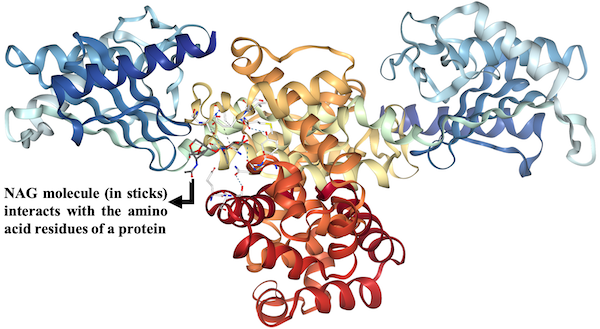A web server for predicting N-Acetylglucosamine binding sites
N-Acetylglucosamine (N-acetyl-D-glucosamine, or GlcNAc, or NAG) is a glucose derivative, having a molecular formula of C8H15NO6, a molar mass of 221.21 g/mol. It is highly significant in several biological systems ranging from bacteria to human. NAG is one of the eight essential saccharides which is needed for the optimal maintenance of the functioning of the human body. It helps in communication between the cells and immune system functioning particular in regards to HIV and tumors.N-Acetyl glucosamine actively plays a significant role in the copious process in the human body as the rebuilding of tissues, involved in the cartilage repairing mechanism, lowers inflammation with bones joints, as well as the optimal functioning of the nervous system and digestive tract, transportation of molecules such as thyroglobulin. In the liver, it controls the secretion of insulin. This sugar is also known to possess anti-tumour and antiviral activity.
NAGbinder is a web server developed for predicting NAG interacting residues in a protein from its primary sequence. This server has following two modules; Sequence based module;PSSM based Module;
Standalone version of NAGbinder has been developed using Python to facilitate user to predict NAG binding sites in proteins on their local machine.

NAGbinder Major Features
- Sequence based module:This module predict NAG binding residues in a protein from its promary sequence.
- PSSM based Module: This module utilize evolutionary information (in form of PSSM profile) of a protein to predict NAG binding residues in a protein.
- Standalone Software: It has been developed using Python and will be freely available to users.
- Datasets: All datasets used in this study will be available to public.